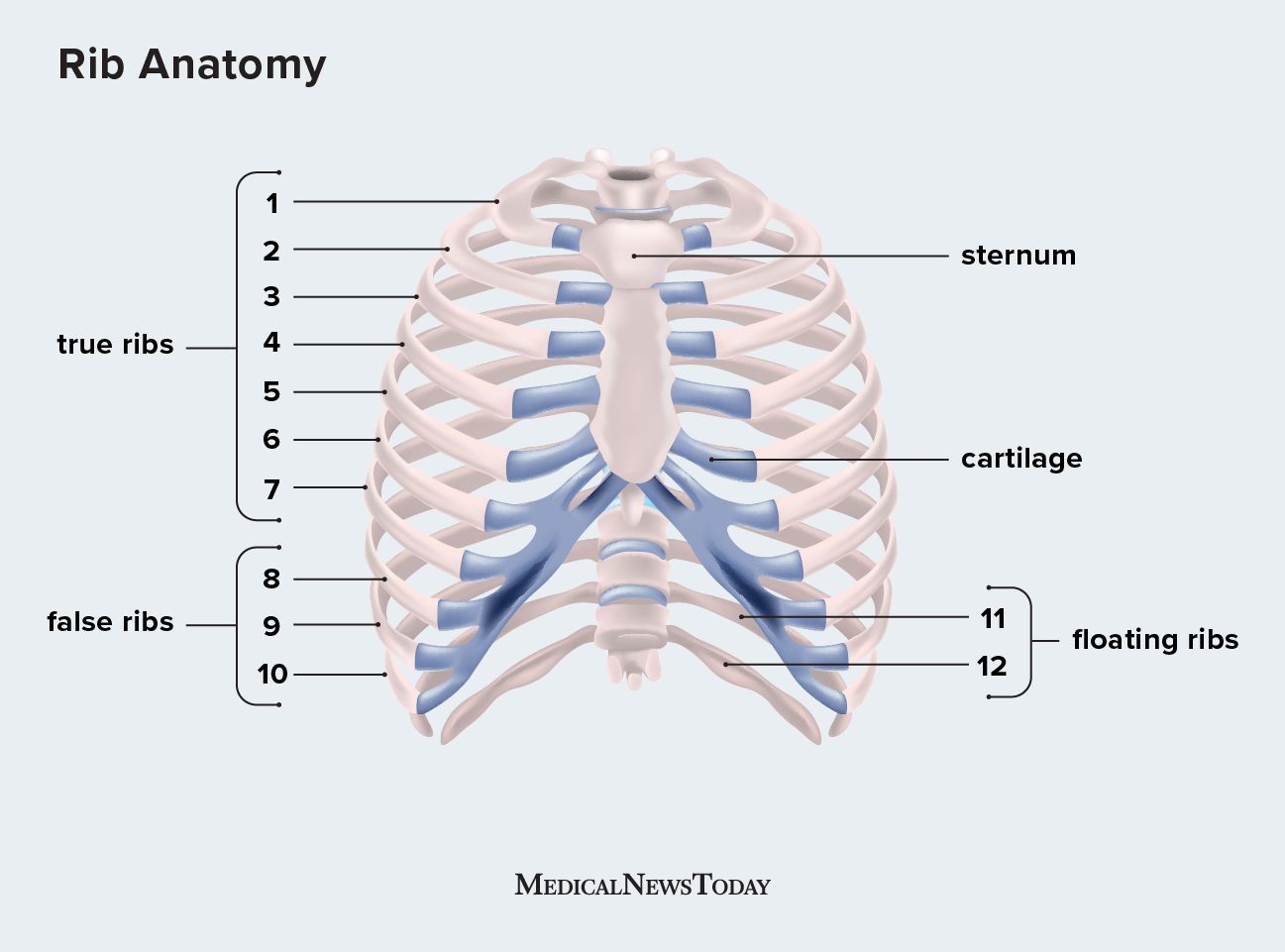Most people have 24 ribs, with 12 on each side of the body. No evidence indicates any difference between males and females.
The ribs and rib cage are excellent examples of the human body’s multifaceted and multifunctional design.
They are strong enough to support the skeleton and protect the vital organs in the chest cavity, including the heart, lungs, and spleen. Yet, the ribs and rib cage are also flexible enough to expand and contract as the lungs fill and release with a person’s breath.
In this article, learn more about the number of ribs humans have, what their function is, and whether females have more than males.

Most people are born with
Some people are born with more than 24 ribs. These extra ribs are called supernumerary ribs. When people are born with less than 24 ribs, it is called agenesis of the ribs.
To get an idea of how many people had an unusual number of ribs, researchers carried out a study in 2014 that included 188 pregnant people, who were each carrying a single fetus. The study revealed that 92% of fetuses had a typical number of ribs, 5.3% had fewer, and 2.7% had more.
The first seven sets of ribs are called true ribs. Costal cartilage anchors them to the edge of the sternum, or breastbone, in the middle of the chest at the front of the body. These ribs attach to the thoracic vertebra of the spinal column in the back.
Ribs 8 to 10 are known as false ribs. These do not connect to the sternum individually. Instead, costal cartilage anchors them to the ribs above them. They collectively share a cartilage connection to the sternum by blending into the cartilage of rib 7. These ribs also connect to the thoracic vertebrae in the back.
Sets 11 and 12 are floating ribs, and they connect only to the thoracic vertebrae of the spinal column in the back.
It is the flexible costal cartilage that allows the ribs to expand when people take deep breaths.
Supernumerary ribs occur in
Supernumerary ribs can also grow out of the lumbar spine below rib 12. A 2022 study notes that this may occur in children with a rare condition called Williams syndrome.
Much of the time, cervical ribs do not cause any symptoms. However, they can press on and constrict nerves and blood vessels, which can create a condition called thoracic outlet syndrome.
Although many people might think that males have fewer ribs than females — most likely sparked by the biblical story of Adam and Eve — there is no factual evidence. Most people have the same number of ribs, regardless of their sex.
However, researchers have noted that although they are rare in the general population, cervical ribs are
The collar bone tends to protect the upper ribs, and the “floating” characteristic of the lowest ribs helps protect them from damage.
Direct pressure on the ribs from an automobile accident, fall, or other blunt trauma causes most rib fractures. A 2020 article notes that broken ribs are a common injury that occurs with chest trauma.
In some cases, severe coughing can cause ribs to fracture.
The United Kingdom’s National Health Service (NHS) notes that symptoms of broken or bruised ribs include:
- pain in the chest, particularly when coughing or breathing in
- tenderness or swelling around the affected ribs
- feeling or hearing a crack
- bruising on the skin near the ribs
The greatest threat from broken ribs is damage to the structure or function of the internal organs.
Flail chest and other conditions
Flail chest is a serious condition that develops when
In cases of flail chest or when any broken ribs become displaced, the broken edge can puncture through the pleural cavity and into the lung.
Severe rib fractures can cause pneumothorax, which is a potentially life threatening condition. This happens when air leaks into the pleural cavity and pushes down over the lung, causing the lung to collapse.
Flail chest may also cause bruising and other damage to the lung tissue, which can lead to acute lung contusion. This type of lung injury can, in turn, lead to acute respiratory distress syndrome, which is severe and life threatening.
Punctured or bruised lungs can cause a severe drop in blood oxygen levels, and people might experience shortness of breath. Their skin may also look pale or slightly blue, and they may have a rapid heart rate.
Other complications of flail chest may include sepsis, respiratory failure, and pneumonia.
The ribs perform vital functions in the body, protecting organs and supporting the breathing process.
The vast majority of humans are born with 24 ribs, 12 on each side of the body.
Contrary to a widely held misconception, males and females have the same number of ribs. However, some people are born with more or less than the typical 24 ribs.
Most of the time, having an unusual number of ribs does not cause any health concerns.


